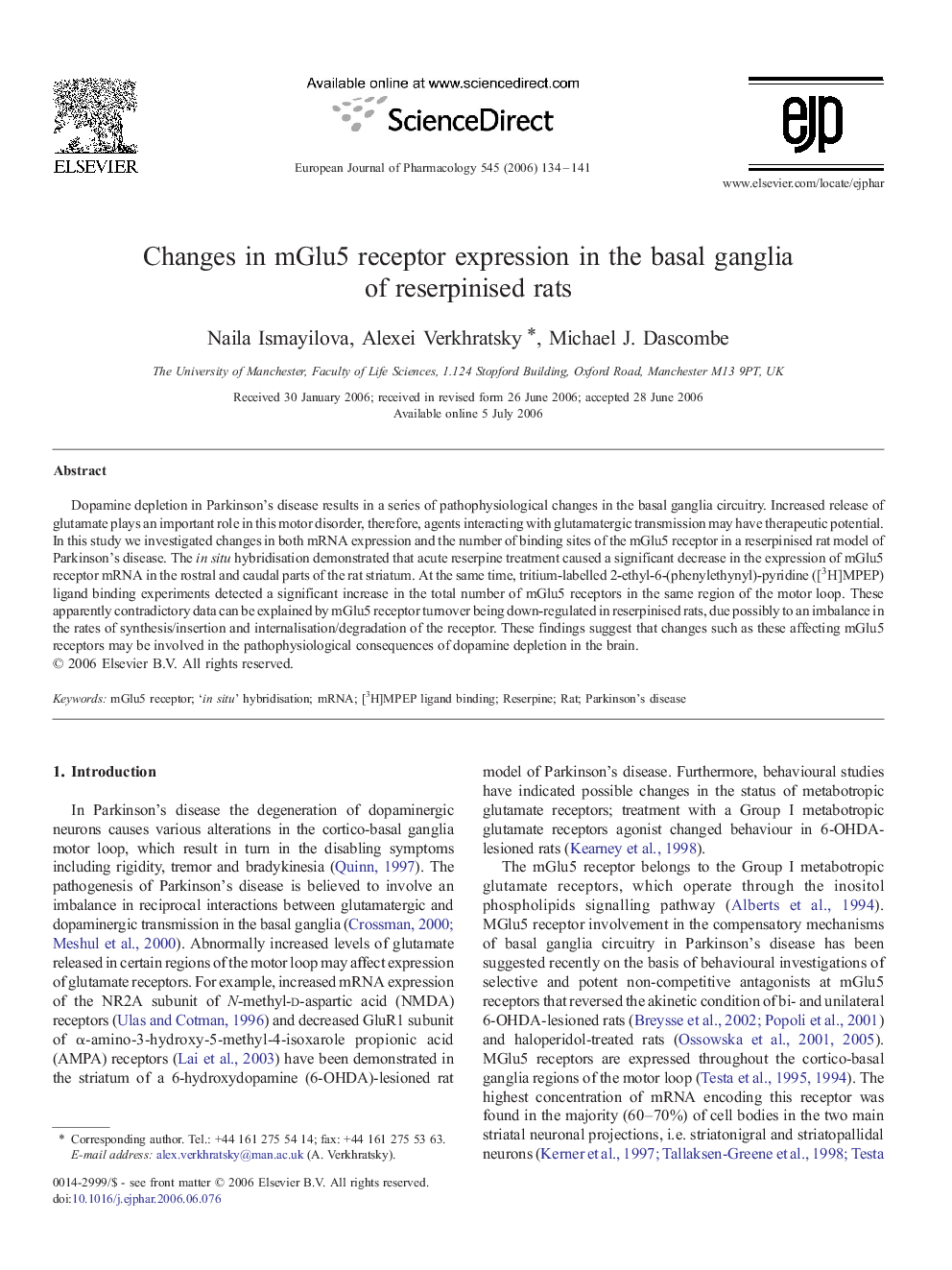| Article ID | Journal | Published Year | Pages | File Type |
|---|---|---|---|---|
| 2536879 | European Journal of Pharmacology | 2006 | 8 Pages |
Dopamine depletion in Parkinson's disease results in a series of pathophysiological changes in the basal ganglia circuitry. Increased release of glutamate plays an important role in this motor disorder, therefore, agents interacting with glutamatergic transmission may have therapeutic potential. In this study we investigated changes in both mRNA expression and the number of binding sites of the mGlu5 receptor in a reserpinised rat model of Parkinson's disease. The in situ hybridisation demonstrated that acute reserpine treatment caused a significant decrease in the expression of mGlu5 receptor mRNA in the rostral and caudal parts of the rat striatum. At the same time, tritium-labelled 2-ethyl-6-(phenylethynyl)-pyridine ([3H]MPEP) ligand binding experiments detected a significant increase in the total number of mGlu5 receptors in the same region of the motor loop. These apparently contradictory data can be explained by mGlu5 receptor turnover being down-regulated in reserpinised rats, due possibly to an imbalance in the rates of synthesis/insertion and internalisation/degradation of the receptor. These findings suggest that changes such as these affecting mGlu5 receptors may be involved in the pathophysiological consequences of dopamine depletion in the brain.
